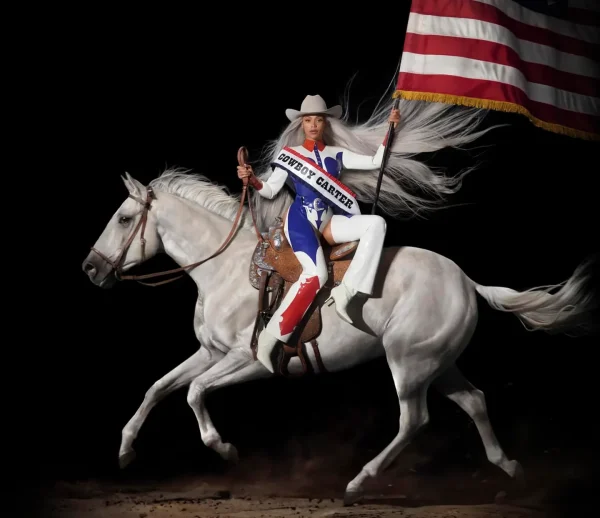Villainizing the vulnerable: The media’s portrayal of struggling women
February 25, 2021
In its latest installment of its series of standalone documentaries, The New York Times Presents sought to bring attention to the lack of autonomy that Britney Spears has had since her mental breakdown in 2007, but it also shed light on the demeaning way women are treated by the media.
“Framing Britney Spears” debuted on February 5, 2021, with millions of people watching on as the series highlighted Britney’s struggles to live a life of independence after being forced into a court-sanctioned conservatorship following a public mental health crisis in 2007. The show aimed to highlight the abusive nature of this conservatorship and relationship with her father, who serves as her conservator.
While it led to a movement of people advocating on social media on Spears’ behalf using #FreeBritney, it has also brought attention to the way the media continues to degrade women, often without acknowledging any of the personal struggles — mental health issues, drug addictions, eating disorders, abusive relationships, etc. — that they are facing in their personal lives, as several media outlets did to Spears.
Freshman Celia Brown is among the countless people whose perception of both Spears and the media changed after watching the documentary. “I had always known that she had kind of an iconic fallout or she was like a celebrity who ‘hit rock bottom.’ But before watching the documentary, I had never really known her story,” she explained.
“The documentary showed me how poorly she had been treated by the media and society,” Brown continued. “I think that the constant attention during her mental health crisis led to her breaking point. The media never gave her room or sympathy, even during a really low point in her life.”
Spears, however, is not the only woman to be humiliated by the media during a particularly vulnerable time of her life. People began to share the names of women from various industries, such as Princess Diana, Amanda Bynes, Monica Lewinsky, Miley Cyrus, etc., who all suffered some form of abuse by the media during periods of personal struggle.
Princess Diana
When Diana Spencer married Charles, Prince of Wales, she was thrust into the world of international fame and world admiration at only 19 years old. She was quickly dubbed the “people’s princess” as the world watched her attempts to break away from royal tradition by buying a magazine engagement ring, sending her sons to private school and her extensive charity work throughout the world.
But behind the glittering smile and happy façade, Spencer was trapped in a physically and emotionally abusive marriage and was fighting a serious battle with bulimia.
While the media fixated on Spencer heavily throughout her marriage, it was after her divorce that the obsessive concentration intensified. In the years after her marriage and leading up to death, the media compulsively criticized and followed her action, to the point where her brother reported to “The Independent” she planned to leave England.
During these years, Spencer was plastered on front of the covers of major newspapers and tabloids on a daily basis, and this exhaustive frequency continued until her death.
At her funeral, her brother, the Earl of Spencer, blamed the media for his sister’s death. “I would say that I always believed the press would kill her in the end,” he said. “But not even I could imagine that they would take such a direct hand in her death, as seems to be the case.”
Amanda Bynes
Amanda Bynes was the Nickelodeon darling of the 1990s and early 2000s, starring in shows such as “The Amanda Show,” films like “She’s The Man” and the Broadway hit “Hairspray,” and rising to unprecedented levels of childhood fame.
Yet, as is common with child actors, all of this fame came crashing down when Bynes announced via Twitter that she would be retiring from acting through a tweet that read, “If I don’t love something anymore, I stop doing it. I don’t love acting anymore, so I’ve stopped doing it. I know 24 is a young age to retire, but you heard it here first.”
In the years that followed, Bynes garnered negative media attention starting in 2012 for a series of illegal charges: a DUI, two hit-and-runs and driving without a license. Bynes continued with similar behavior in the following year, having been charged with reckless endangerment and attempted tampering with evidence.
Countless news sources began to scrutinize Bynes in the media over the next few years, with little acknowledgement for the issues she came forward with during this time: accusing her father of emotional and sexual abuse then recanting, struggling with drug abuse and being placed under a conservatorship by her mother.
Nearly five years later, however, Bynes re-emerged into the spotlight to shed light on her past battles that led her to her criticized and controversial behavior. “Those days of experimenting [with substances] are long over. I’m not sad about it and I don’t miss it because I really feel ashamed of how those substances made me act,” she shared in an interview to Paper magazine.
Monica Lewinsky
Monica Lewinsky is a name that lives in infamy, much due to the way the media portrayed her throughout the Clinton-Lewinsky scandal, despite her being only a 22-year-old intern at the time, whereas Bill Clinton was 27 years her senior and one of the most powerful men in the world.
Lewinsky began working as an intern for Clinton’s administration in 1995, during his first term. The relationship between Clinton and Lewinsky — which can hardly be described as a relationship between equals — took place nine times over the course of four years, from 1995-1998.
After the affair concluded, Lewinsky divulged the details to her friend, who also worked for the government, and had secretly been recording the conversation. These recordings were then submitted to Ken Starr, who was currently investigating Clinton on other matters.
While Clinton uttered his controversial “I did not have sexual relations with that woman” denial, the media began to scrutinize Lewinsky for her role in the situation. Even after Lewinsky turned over her evidence-stained blue dress, incriminating Clinton, she was continually put through the wringer by the media.
Meanwhile, Clinton did not receive the same level of scrutiny from the media, despite his evident abuse of power and being just as — if not more — guilty of the same actions.
Despite Lewinsky’s attempts to move beyond the scandal failed. Nearly three years later, she was attacked at a Q&A for an HBO documentary featuring her when she was confronted with a crude question: “How does it feel to be America’s premier bl*w-j*b queen?” Which to Lewinsky was “hurtful and insulting.”
Over 20 years later, Lewinsky continues to be the target of jokes and comments — despite making strides as an activist —whereas Clinton is viewed as the campaign husband, virtually protected from the same harassment as Lewinsky.
Demi Lovato
Like Amanda Bynes, Demi Lovato was a childhood sweetheart, gracing Disney Channel fans with her roles in “Barney,” “Sonny With a Chance” and films like “Camp Rock.” As is common for young celebrities, fortune and constant attention without proper coping mechanisms led Lavato into a dark time in her life.
While the media began fixating on Lovato, who was beginning her world tour, in 2010, Lovato entered rehab to help recover from an eating disorder. During her stay at rehab, Lovato’s family asked the media to respect her during this difficult time, as she was also diagnosed with bipolar disorder.
Even though it seemed that Lovato was doing better, she was still actively abusing substances — primarily cocaine. Her addiction began at age 17, and continued on-and-off until 2012. Much of Lovato’s substance abuse stems from the search to find the same comforts in them as her biological father, who abandoned the family, did.
Yet, during these constant struggles, Lovato remained the focus of several gossip magazines, which often compared her to fellow Disney Stars Selena Gomez and Miley Cyrus.
Even during Lovato’s recovery, she remained in the spotlight of the media as she continued to produce music. With constant media coverage and criticism engulfing her daily life, Lovato was unfortunately led to an almost fatal overdose in 2018 — something that the media continued to report on, even when some information was false.
Although the singer is sober again, the media continues to talk about Lovato —whether it be her career, outfits, personal life or love life.
As each of these women battled the demons of their personal lives, they were unable to escape the scrutiny and abuse of the media, something men seldom face.
Mohr lamented the fact that men are often addressed and written about differently when going through personal struggles, whereas women are degraded and torn down for it. “The media is inherently misogynistic and women are held to such a higher standard in comparison to men,” she voiced. “Women are always taken advantage of or demonized or looked at negatively and still have a huge double standard.”
While these double standards and fallacious portrayals of women in the media have existed for decades, people like Brown and Mohr believe that as society evolves, it is time to change the way women are portrayed by the media. Women continue to be villainized by the media while at their most vulnerable, whereas men rarely experience the same — something that society has failed to address.
This story was originally published on Spartan Shield on February 23, 2021.



























![IN THE SPOTLIGHT: Junior Zalie Mann performs “I Love to Cry at Weddings,” an ensemble piece from the fall musical Sweet Charity, to prospective students during the Fine Arts Showcase on Wednesday, Nov. 8. The showcase is a compilation of performances and demonstrations from each fine arts strand offered at McCallum. This show is put on so that prospective students can see if they are interested in joining an academy or major.
Sweet Charity originally ran the weekends of Sept. 28 and Oct. 8, but made a comeback for the Fine Arts Showcase.
“[Being at the front in the spotlight] is my favorite part of the whole dance, so I was super happy to be on stage performing and smiling at the audience,” Mann said.
Mann performed in both the musical theatre performance and dance excerpt “Ethereal,” a contemporary piece choreographed by the new dance director Terrance Carson, in the showcase. With also being a dance ambassador, Mann got to talk about what MAC dance is, her experience and answer any questions the aspiring arts majors and their parents may have.
Caption by Maya Tackett.](https://bestofsno.com/wp-content/uploads/2024/02/53321803427_47cd17fe70_o-1-1200x800.jpg)
![SPREADING THE JOY: Sophomore Chim Becker poses with sophomores Cozbi Sims and Lou Davidson while manning a table at the Hispanic Heritage treat day during lunch of Sept 28. Becker is a part of the students of color alliance, who put together the activity to raise money for their club.
“It [the stand] was really fun because McCallum has a lot of latino kids,” Becker said. “And I think it was nice that I could share the stuff that I usually just have at home with people who have never tried it before.”
Becker recognizes the importance of celebrating Hispanic heritage at Mac.
“I think its important to celebrate,” Becker said. “Because our culture is awesome and super cool, and everybody should be able to learn about other cultures of the world.”
Caption by JoJo Barnard.](https://bestofsno.com/wp-content/uploads/2024/01/53221601352_4127a81c41_o-1200x675.jpg)











